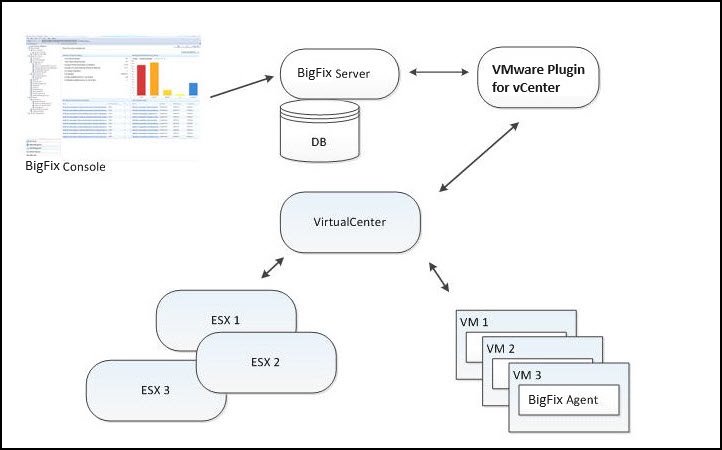Architecture
The VMware architecture helps in understanding and managing virtualized environment.
The following diagram depicts a visual representation of how Virtual Endpoint Manager is designed to work in your environment.

Virtual Endpoint Manager uses the standard BigFix architecture and a VMware plugin.
A VMware plugin is a BigFix client that has the plugin portal installed on it along with the vSphere management extender plug-in installed and configured.
The VMware plugin sends queries to vCenter about the virtual machines and hosts that it controls, and reports information back to the BigFix server. These reports end up as separate computer objects in the BigFix console. Because no actual BigFix agent is installed on these computers, they are known as proxied machines. From the console, you can send commands such as power-on, power off, suspend, or take snapshots. The VMware plugin passes the commands by communicating with vSphere through the VMware application programming interface (API).
The properties of host and virtual machine guests can be discovered with the use of the VMware API. These properties include the IP address, available memory, the BIOS versions, and number of snapshots. See the list of new properties in List of actionscript commands.
When the BigFix console issues a command, it gets passed down to the VMware plugin, which translates this action script into VMware API commands. These APIs report back success or failure, and the VMware plugin interprets these results and pass them back up to the BigFix client. The client passes them back up to the BigFix server. The status of the commands are reported back to the BigFix console.